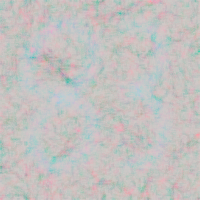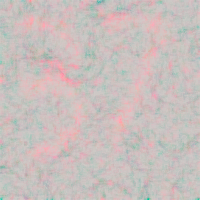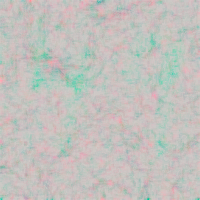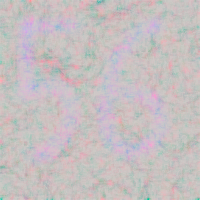TOLUENE (Tol) is an important industrial solvent, and several thousands of tons are produced each year by the current world industrial production facilities.[1] The main applications of Tol occur in the refining of automotive gasoline; in the manufacture of rubber and paints, lacquers, ink, thinner, and glues; and during organic synthesis of many chemicals. Tol is also used in the pharmaceutical industry and in some printing and tanning processes.[2]
The American Conference of Governmental Industrial Hygienists[3] (ACGIH) proposed a threshold limit value-time weighted average (TLV-TWA) of 50 ppm (188 mg/[m.sup.3]) for occupational exposure to Tol. The same value was adopted in Germany (Maximale Arbeitsplatzkonzentration [MAK]).[4] Tol also represents a major environmental problem. More than 85% of the solvent is released into the environment,[2] where it can persist for a long time (i.e., half-life = several days).[1,2]
Long-term exposure to Tol can induce various toxic effects (for a review, see references 1 and 5). An important target organ involved in chronic Tol exposure is the visual system.[6] Changes in visually evoked responses were observed in rotogravure printers,[7] who were exposed to environmental levels of the solvent that greatly exceeded the current TLV-TWA,[3] as well as in workers exposed to low concentrations.[8] Furthermore, visual effects like scotomata, blurred vision, impaired visual potentials, and clinical optic neuritis are commonly observed in glue sniffers.[9,10,11] Given that Tol is currently the principal solvent contained in glue, such effects are likely related to this neurotoxin. Another eye effect recently reported in workers chronically exposed to Tol is an impairment in color vision,[12]--currently considered an early sign of eye neurotoxicity from chemicals[13,14]--but the observation was not confirmed by other authors.[15] Therefore, the effect induced by chronic Tol exposure on color perception requires further evaluation.
In this article, we compared color vision in a group of workers exposed to Tol during rubber production and in a group of referents. Color perception was studied with the Lanthony D-15 desaturated panel (D-15 d), and the results were expressed quantitavely with the Color Confusion Index (CCI) and the Total Confusion Index (TOTCI). The D-15 d results were correlated to both current Tol exposure and cumulative Tol exposure.
Materials and Method
A rubber production plant was studied. A brief walk-through inspection was held in the factory prior to the survey. Information about current and past production cycles, machinery used, and exposure to chemicals was collected.
The study protocol was discussed with representatives of management, the workers, and the occupational health service of the plant. We then presented, in detail, the study and all procedures involved to the workers, and we stated clearly that participation was completely voluntary, that refusal to participate involved no penalty or loss of benefits, and that subjects could discontinue participation at any time without penalty or loss of benefits. We took great care to obtain informed consent from all participants. At the end of the study, we explained the results of the tests to the subjects directly.
Subjects. Thirty-seven volunteers exposed to Tol during rubber production agreed to participate. Apart from Tol, workers were not significantly exposed to other chemicals that interfere with visual functioning. Questionnaire-based information on work history and health status, occupational or avocational use of solvents, drinking and smoking habits, and pharmaceutical drug use were collected by a physician during a physical examination that included determination of far visual acuity by letter charts.
We included only apparently healthy subjects who were not using pharmaceutical drugs that interfered with eye function and who were not using other chemicals toxic to the eye. In addition, our subjects had a daily average alcohol intake that was less than 50 gm/d, they smoked fewer than 30 cigarettes/d, and they had a visual acuity of 6/10 or greater (with lenses in use). Four workers were excluded: 3 who had excessive alcohol consumption and 1 who was affected by congenital dyschromatopsia. Finally, 33 workers were enrolled in the study: 24 were involved in rubber smearing (i.e., smearers), and the remaining 9 used Tol in the preparation of solutions (i.e., solutioners).
The main working activities during the day of the survey (e.g., specific tasks, hours of work, production, etc.) were similar to those encountered during the previous period; therefore, exposure measured during the study was representative of current worker exposure.
A control group of 18 workers, all of whom were not exposed to Tol or to other solvents or known eye-toxic substances, was selected from another plant, and the same exclusion criteria described earlier were applied. One worker was excluded for excessive alcohol consumption and another was excluded for smoking more than 30 cigarettes/d. Consequently, 16 controls were enrolled in the study. The main characteristics of exposed workers and controls are reported in Table 1.
Table 1.--Main Characteristics of the Subjects Examined in the Study
Notes: [bar]x = mean, SD = standard deviation, NS = not significant, Diff. = difference, and Tol = toluene.
Exposure evaluation. We used biological monitoring (i.e., measurement of urinary excretion of unmodified Tol [TolU])to estimate Tol exposure in rubber workers.[16] Immediately prior to the afternoon half-shift (started at 1:30 P.M.), we asked each worker to empty his bladder. We then collected a urine sample at the end of the shift (5:30 P.M.). Within 3 min from voiding, 10 mi of each sample were transferred into 120-ml Supelco glass vials with airtight plugs without silicone. Urine samples were voided and collected in a clean environment, thus avoiding contamination. Vials were kept refrigerated until analysis, which was performed within a few days from collection.
An HP 5880 A gas chromatograph (GM)connected with an HP 5970 A mass selective detector (HP 5970 A) was used. Details about the analytical method are reported elsewhere.[17,18] As ascertained during the preliminary inspection, no changes in production technology had been introduced in the factory during the past few years, and no significant variation in occupational exposure to Tol was expected. Consequently, we calculated an index that was representative of the "total" cumulative exposure to the solvent (CumExp), as follows:
CumExp = TolU ([micro]g/I) x exposure duration (months).
Prior to the study, we conducted preliminary environmental monitoring of exposure levels of other neurotoxic solvents (i.e., n-hexane, xylene, methyl isobutyl ketone, and ethyl acetate). We always obtained concentrations that were well below 1/100 of the current TLV-TWA.[3] Therefore, we considered exposure to these solvents as nonrelevant.
Color vision testing. Color vision was assessed with the Lanthony 15 Hue desaturated panel (D-15 d)--a test based on the subject's ability to recombine a set of 15 caps colored with desaturated colors in accordance with a definite chromatic sequence.[19] The D-15 d, which is specifically suited for early detection of acquired dyschromatopsia,[20] was performed under standardized conditions: the workers were examined in the morning (before exposure commenced). A daylight fluorescent lamp (color temperature 5,000 [degrees] K), which provided 1,200 lux on the work plane, was used.[21] The results of the test were expressed quantitatively as a CCI.[22] When the test is completed correctly, the "perfect" CCI is 1; errors increase the value. The greater the number--and relevance--of the mistakes, the higher the CCI. Acquired color vision loss can be monocular or asymmetrical; therefore, we performed the D-15 d monocularly, and the mean value of the two eyes was considered for all further processing. We took care to avoid differences in testing conditions and interpretation bias.
In both exposed subjects and controls, the D-15 d was performed in the morning--before work--in fixedlight conditions as described earlier. Investigators presented the test to the examined subjects and recited the same exact sentences during each instruction, and no comments were given during or at the end of each test. No time limits were imposed, and the testers were unaware of both the exposure level and task of the workers. The results of D-15 d were automatically evaluated with a computerized program for CCI calculation[22]; any subjective interpretation of the data was excluded. We previously evaluated the reproducibility of the test under field conditions in 10 apparently healthy subjects who were not exposed to substances toxic to the visual system. On the basis of 10 repetitions, the coefficient of variation within the series of the test was 0.5%, whereas that among the series was 2.8%.
The TOTCI, another index for quantitative evaluation of color perception, was also calculated.[23] TOTCI, like CCI, is a representation of the magnitude of the perceived color difference,[24] but it is based on a different formula to quantify the perceptual distance between color caps included in the D-15 d.[25] We compared the sensitivity of CCI and TOTCI to evaluate difference in color perception between exposed workers and referents.
Statistical method. Normality of the variables was evaluated with the Kolmogorov-Smirnov test. Between-group comparisons were assessed by Student's t test and by Mann-Whiltney U test. Correlation between variables was tested by Pearson's correlation coefficient. Multiple-regression analysis was performed, with CCI and TOTCI as dependent variablies; age (y), seniority (mo), alcohol consumption (gm/d), smoking habits (cigarettes/d), and exposure (TolU levels) were independent variables. All statistical analyses were carried out with the SYSTAT[TM] statistical package.
Results
CCI values obtained in exposed workers and in controls are presented in Table 2. If we consider the entire group of workers, the mean value of the index was increased significantly in subjects, compared with referents: 1.29 vs. 1.10, respectively (p [is less than] .01), indicating that color perception was reduced in Tol-exposed subjects. Similar results were obtained when performance was evaluated with the TOTCI; however, with this index, the difference between values in exposed workers and referents was wider (mean values were 1.49 and. 1.16, respectively), and the significance level was higher (p [is greater than] .001).
Table 2.--Values for CCI and TOTCI in Toluene-Exposed Workers and in Referents
Notes: CCI = Color Confusion Index, TOTCI = Total Confusion Index, [bar]x = mean, SD = standard deviation, Diff. = difference, and Tol = toluene.
For both indices (CCI and TOTCI), the difference between smearers and solutioners was not significant.
Reduction in color perception can also be determined if smearers and solutioners are considered separately. Mean CCI values were worse in the two groups of subjects than in referents (p [is less than] .01) (Table 2). We again used TOTCI to evaluate color perception, and the results were similar to those obtained earlier, but the difference between exposed workers and controls was wider and more significant (p [is less than] .001) (Table 2).
No significant difference in Tol exposure was observed between smearers and solutioners when we considered either TolU, values (Table 1) or CumExp. In addition, color vision--evaluated by both CCI and TOTCI--did not differ significantly between the two groups (Table 2).
We then had to establish whether color perception was related to exposure in Tol-exposed workers. Neither CCI nor TOTCI were correlated significantly to TolU. We then considered the "total" cumulative exposure to Tol, expressed as CumExp, and the correlation between this index and color testing results was calculated. The results obtained in the entire group of workers are presented in Figs. 1 and 2. Both CCI and TOTCI were correlated with cumulative dose (r = .505 [p = .003] and r = .586 [p = .0003], respectively). Similar, or possibly better, results were obtained when we considered the smearers separately: the correlations (r) were .685 (p = .0002) for CCI and .754 (p [is less than] .0001) for TOTCI. With respect to solutioners, lower, nonsignificant correlation coefficients for ICCM and TOTCI were observed (r = .309 and .413, respectively). This result, however, must be evaluated in light of the reduced number of workers in the group of smearers.
[Figures 1-2 ILLUSTRATION OMITTED]
The results of multivariate analysis showed no significant correlation between color vision loss and age, alcohol consumption, or cigarettes smoking.
Discussion
Our results disclosed lower color discrimination in Tol-exposed workers than in referents, as indicated by significantly worse values of both CCI and TOTCI indices among these exposed workers (Table 2). We also confirmed this difference when smearers and solutioners were compared separately with the control group. Such results were not influenced by the principal factors that interfere with color vision (i.e., pharmaceutical drugs, eye or general diseases, poor vision, and tobacco smoking) because they were ruled out in the subjects examined.
The only difference between workers and referents was daily alcohol intake (Table 1). Even if an impairment in color vision was reported previously in alcoholics,[26] we must consider that only moderate drinkers ([is less than] 50 gm/d of alcohol) were included in this study, and D-15 d results and- alcohol consumption were not related significantly in multivariate analysis. For the reasons stated, it is unlikely that the results of color vision testing were influenced by alcohol intake by our subjects.
Given that factors interfering with color vision were eventually ruled out, we considered the reduction in perception observed in rubber workers to be a consequence of their occupational exposures. Tol was the main chemical used by these workers, and no other exposures potentially affecting the visual system were identified. Consequently, Tol is the most likely cause of the observed color perception impairment. This hypothesis is also supported by the correlation we observed between exposure (CumExp) and D-15 d results; significant r values were obtained for both CCI (Fig. 1) and TOTCI (Fig. 2).
Zavalic et al.[12] reported color vision loss similar to that experienced by our subjects, and the loss was correlated with environmental toluene levels and also with TolU in workers exposed to median levels of toluene of 132 ppm (range = 66-250 ppm). Nevertheless, in their study, Zavalic et al.[12] failed to detect any impairment in another less-exposed group (median value = 32 ppm, range = 11-49 ppm). On the other hand, Nakatsuka et. al.[15] did not find any color perception impairment in workers exposed to mean Tol concentrations of approximately 45 ppm.
In our workers, the mean value of TolU was 63 [micro]g/l (standard deviation = 27 [micro]g/l). On the basis of our previous data,[17] such a value corresponds to an environmental level of Tol of about 42 ppm. The difference between our observations and the results reported by Nakatsuka et al.[15] in workers exposed to similar levels of the solvent may resulted from the fact that these author's applied Lanthony's new color test, instead of the more-sensitive D-15 d. Furthermore, Nakatsuka et al.[15] evaluated the outcomes of the test qualitatively, but not quantitatively (i.e., use of the CCI or TOTCI was not attempted); therefore, the results were not comparable.
The D-15 d outcomes were not correlated to TolU in the present study, unlike the outcomes reported by Zavalic et al.[12] This difference may be explained if we consider the moderate exposure in our workers. The correlation between TolU and CCI found by Zavalic et al.[12] resulted from much higher exposure levels (66-250 ppm) than to which our subjects were exposed, but the researchers failed to show any correlation in another group of workers for whom exposure (median = 32 ppm) was more similar to our workers. Conversely, we proved a significant correlation between cumulative dose (i.e., CumExp) and impairment in color perception, whereas Zavalic et al.[12] apparently did not evaluate either the influence of cumulative dose or previous duration of exposure.
A relevant aspect in the study of color vision loss in Tol-exposed workers is the assessment of a threshold level of exposure for this effect. Our data are scant for such an evaluation, but the results suggest that an impairment can be expected in workers when they are exposed to Tol levels that are similar to or lower than the current occupational limit proposed by the ACGIH[3] and the limit in force in Germany.[4]
Another important point is the evolution of impairment. In our study, color vision loss was subclinical; the workers were unaware of any impairment, but exposure to Tol was moderate, and the duration of previous exposure to the solvent was relatively brief (average = [is less than] 10 y), compared with a potential working life of 40 y. We could not evaluate the effect of longer and/or higher exposures, but a progression of impairment is suggested by the correlation found between decrease in color perception and cumulative exposure. In addition, cases of optic neuritis observed among glue sniffers[11] suggest that high inhalation exposures can induce clinically overt damage to eye function. Accordingly, a progression of the effect of Tol on visual function is likely, even though additional data on more exposed workers and/or long-term exposure are required for the confirmation of this hypothesis.
The pathogenesis of color vision loss induced by Tol is unclear. In agreement with previous studies on other solvents,[20,27-29] the blue-yellow range of color vision was affected in our workers, and only a few subjects also presented a red-green range decrease. According to "Kollner's rule," such a color range effect suggests a retinal location.[30] Other chemicals that affect color vision can also have toxic effects on the retina, as was demonstrated by electrophysiological data in workers exposed to styrene and tetrachloroethylene,[31] as well as by experimental data for other solvents.[32] Both of our studies that showed an effect on blue-yellow range of color vision[27-29] as well as electrophysiologic data[31,32] suggest an effect of solvents on the retina. In this case (i.e., if the effect is really on the retina), the toxicity may be related to a direct effect on cones or neurotransmitters.
Alternatively, color vision loss may be the result of Tol effects on the optic nerve or on the brain. Changes in visually evoked response observed in rotogravure printers[7,8,11] appear to support the latter hypothesis. Singling out the mechanism of toxicity will require further research.
Conclusions
Our results support the hypothesis that occupational exposure to Tol can impair color perception. The correlation observed between impaired color perception and cumulative solvent exposure suggests that there is a progressive loss of color vision as exposure is continued. The estimated environmental levels of Tol were near to, or lower than, the current limits for occupational exposure--raising the question of whether such limits are sufficiently protective, at least with respect to eye effects.
The difference between controls and Tol-exposed workers was wider, and the correlation with cumulative exposure higher, when results were expressed with TOTCI, instead of the CCI. Such a result suggests that the TOTCI may be more sensitive than CCI for the quantitative evaluation of Tol-related color vision impairment. Accordingly, the former index should be adopted in future studies in which color vision effects are studied in workers exposed to toluene, and possibly, other chemicals.
A final and somewhat general conclusion is that the results of this study further support the hypothesis that color vision should be evaluated in so[vent-exposed workers.
Submitted for publication May 16, 1999; revised; accepted for publication May 17, 2000.
Requests for reprints should be sent to Prof. F. Gobba, Dipartimento di Scienze Igienistiche, Microbiogiche e Biostatistiche, Universita di Modena e Reggio Emilia, Via Campi 287, 41100 Modena (MO), Italy.
References
[1.] Agency for Toxic Substances and Disease Registry (ATSDR). Toxicological Profile for Toluene (Update): Draft for Public Comment. Atlanta, GA: U.S. Department of Health and Human Services, Public Health Service; 1998.
[2.] World Health Organisation (WHO). Toluene. Environmental Health Criteria 52. Geneva, Switzerland: WHO, 1985.
[3.] American Conference of Governmental Industrial Hygienists (ACGIH). Threshold Limit Values for Chemical Substances and Physical Agents and Biological Exposure Indices. Cincinnati, OH: ACGIH, 1997.
[4.] Deutsche Forschungsgemeinschaft. Maximum Concentrations at the Workplace and Biological Tolerance Values for Working Materials 1996. Weinheim, Germany: VHC Verlagsgesellschaft, 1996.
[5.] Antti-Poika M, Kalliokoski P, Hanninen, O. Toluene. In: Snyder R (Ed). Ethel Browning's toxicity and metabolism of industrial solvents, vol 1. Hydrocarbons. Amsterdam, The Netherlands: Elsevier, 1987; pp 38-55.
[6.] Grant WM, Schuman JS. Toxicology of the Eye. Springfield, IL: Thomas Publishers, 1993.
[7.] Urban P, Lukas E. Visual evoked potentials in rotogravure printers exposed to toluene. Br J Ind Med 1990; 47:819-23.
[8.] Vrca A, Bozieevic D, Karaeic V, et al. Visual evoked potentials in individuals exposed to long-term low concentrations of toluene. Arch Toxicol 1995; 69:337-40.
[9.] Takeuchi Y, Hisanaga N, Ono Y, et al. Cerebellar dysfunction caused by sniffing of toluene containing thinner. Ind Health 1981; 19:163-69.
[10.] Cooper R, Newton R Reed M. Neurophysiologicai signs of brain damage due to glue sniffing. Electroencephalogr Clin Neurophysiol 1985; 60:23-26.
[11.] Malm G, Lying-Tunnel U. Cerebellar dysfunction related to toluene sniffing. Acta Neurol Scand 1980; 62:188-90.
[12.] Zavalic M, Mandic Z, Turk R, et al. Quantitative assessment of color vision impairment in workers exposed to toluene. Am J Ind Med 1998; 33:297-304.
[13.] Gobba F, Cavalleri A. Colour vision loss as an early symptom of neurotoxicity in solvent exposed workers. Epidemiology 1995; 6(4):S97.
[14.] Gobba F, Cavalleri A. Colour vision impairment. Effect induced by chronic occupational exposure to neurotoxic chemicals. In: Sixth International Symposium on Neurobehavioral Methods and Effects in Occupational and Environmental Health. Shanghai, China; October 15-18, 1997.
[15.] Nakatsuka H, Watanabe T, Takeuchi Y, et al. Absence of blue-yellow color vision loss among workers exposed to toluene or tetrachloroethylene, mostly at levels below occupational exposure limits. Int Arch Occup Environ Health 1992; 64:113-17.
[16.] Gobba F, Ghittori S, Imbriani M, et al. The urinary excretion of solvents and gases for the Biological monitoring of occupational exposure: a review. Sci Total Environ 1997; 199:3-12.
[17.] Ghittori S, Imbriani M, Pezzagno G, et al. The urinary concentration of solvents as a biological indicator of exposure: proposal for the biological equivalent exposure limit for nine solvents. Am Ind Hyg Assoc J 1987; 48:786-90.
[18.] Imbriani M, Ghittori S, Pezzagno G, et al. Toluene and styrene in urine as biological exposure indices. Appl Ind Hyg 1986; 1:172-76.
[19.] Lanthony R The desaturated panel D-15. Doc Ophthalmol 1978; 46:185-89.
[20.] Mergler D, Blain L. Assessing color vision loss among solvent-exposed workers. Am J Ind Med 1987; 12:195-03.
[21.] Gobba F, Galassi C. Alterazioni della discriminazione cromatica in esposti a stirene [Impairment of chromatic perception in exposure to styrene.]. In: Capodaglio E, Manzo L (Eds). Esposizione a stirene. Pavia, Italy: La Goliardica, 1990:125-32.
[22.] Bowman KJ. A method for quantitative scoring of the Farnsworth panel D-15. Acta Ophtalmol 1982; 60:907-16.
[23.] Vingrys AJ, King-Smith PE. A quantitative scoring technique for panel tests of color vision. Invest Ophthalmol Vis Sci 1988; 29:50-63.
[24.] Geller M, Hudnell K. Critical issues in the use and analysis of the Lanthony Desaturated Color Vision Test. Neurotoxicol Teratol 1997; 19:455-65.
[25.] Wyzecki G, Stiles WS. Color Science. New York: John Wiley, 1982.
[26.] Mergler D, Blain L, Lemaire J, et al. Colour vision impairment and alcohol consumption. Neurotoxicol Teratol 1988; 10: 255-60.
[27.] Gobba F, Galassi C, Imbriani M, et al. Acquired dyschromatopsia among styrene exposed workers. J Occup Med 1991; 33: 761-65.
[28.] Cavalleri A, Gobba F, Paltrinieri M, et al. Perchloroethylene exposure can induce colour vision loss. Neurosci Lett 1994; 179: 162-66.
[29.] Mergler D, Belanger S, Grosbois S, et al. Chromal focus of acquired chromatic discrimination loss and solvent exposure among printshop workers. Toxicology 1988; 49:341-48.
[30.] Hart WM. Alder's Physiology of the Eye. St Louis, MO: Mosby-Year Book, 1992.
[31.] Mirzoev TA, Sultanov MY. The action of styrole and tetrachloroethylene on electric activity of the retina. Ophthamol Zhumal 1989; 5:262-65.
[32.] Carricaburu P, Lacroix R, Lacroix J. Modifications de l'electroretinogramme de la Souris blanche apres administration parenterale de solvants organiques. [Modifications of the white mouse electroretinogram after injection of organic solvents.] Ann Pharmacol Fr 1980; 38:155-60.
ALESSANDRO CAVALLERI Sezione di Medicina Preventiva del Lavoratori Universita di Pavia Pavia, Italy and Centro Studi e Ricerche di Tossicologia Industriale Universita di Pavia Pavia, Italy
FABRIZIOMARIA GOBBA Dipartimento di Scienze Igienistiche Microbiologiche e Biostatistiche Universita di Modena e Reggio Emilia Modena, Italy
ELEONORA NICALI VITTORIO FIOCCHI Sezione di Medicina Preventiva del Lavoratori Universita di Pavia Pavia, Italy and Centro Studi e Ricerche di Tossicologia Industriale Universita di Pavia Pavia, Italy
COPYRIGHT 2000 Heldref Publications
COPYRIGHT 2001 Gale Group





